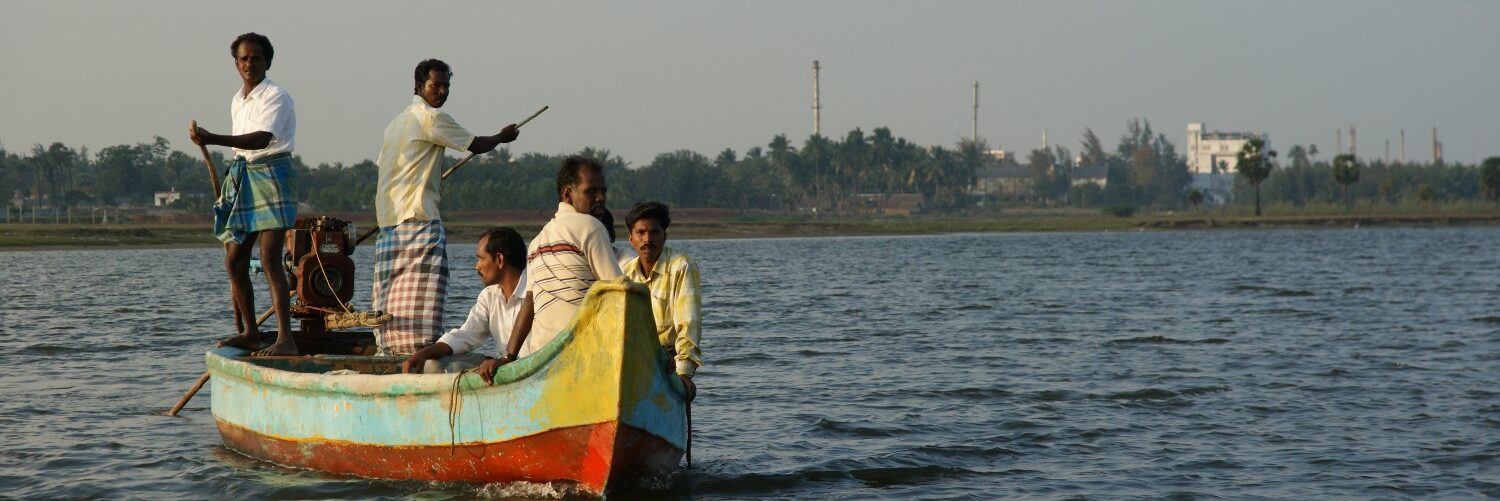SIPCOT Area Community Environmental Monitors
Joint project of The Other Media, FEDCOT, Global Community Monitor and
monitors from Eachangadu, Sangolikuppam and Semmankuppam
Press Release
Cuddalore, 7th August 2004: SIPCOT Area Community Environmental Monitors recorded at least 283 incidents of chemical odour pollution, including 223 serious incidents as part of a research study conducted between April 1 and July 10, 2004. The report titled “Chemical Odour Incidents At SIPCOT, Cuddalore” which was released today corroborated long-standing claims by SIPCOT area residents that they are subject to intense chemical odours throughout the day. Villagers also complain of health effects as a result of air and water pollution, and point to the odours as the evidence of air pollution.
According to the report, chemical odour incidents tend to increase in frequency during the latter half of the day. At least 85 percent of the incidents reported between 12 noon and 12 midnight were of a serious nature, as opposed to only 75 percent between 12 midnight and 12 noon. On the whole, the monitors recorded at least 30 different chemical odours, and reported 36 health symptoms related to the odours.
Some of the chemical odours were reported to be characteristic of some of the units in the SIPCOT area public toilet smell or the smell of human excreta associated with SPIC Mitocon; decaying corpse or burning dead body smell from with Pioneer Miyagi; hospital smell and sweetish sugarcane-like smell with Tagros; chikkoo smell from Asian Paints. Other companies like Shasun — also named by monitors as a serious polluter — emit a wide variety of chemical odours. The most commonly reported symptoms related to these chemical odours included headache, nausea, vomiting sensation, eyes and throat irritation, and dizziness.
“Regulatory authorities treat odours merely as a nuisance. However, science tells us that chemical odours are indicative of chemical pollution,” said XYZ, a SIPCOT Area Community Environmental Monitor from Semmankuppam village. “Every odour incident we have recorded is related to a serious escape of chemicals from SIPCOT factories. The fact that we smell it in our villages and on the highway indicates how badly communities are being poisoned by SIPCOT industries.”
The SIPCOT chemical industrial estate in Cuddalore houses about twenty-five chemical industries and is notorious for its pollution. In 2003, the Indian Peoples Tribunal (IPT) headed by Justice (Retd) J. Kanakaraj acknowledged the persistent odour problem in SIPCOT. The panel reported “a noticeable stench of chemicals in the air around SIPCOT, a sort of suffocating and choking atmosphere.” The IPT report also highlighted that “Villages such as Kudikadu, Thaikal, Eachangadu and Sonnanchavadi lie in a virtual “gas chamber” surrounded on three sides by chemical factories and bounded on the fourth by the river.”
Despite repeated protests by villagers about chemical odour incidents and related health effects, the Tamilnadu Pollution Control Board has taken no action. Neither has the Board conducted any ambient air quality monitoring for toxic gases that could originate from the SIPCOT factories.
“The Tamilnadu Pollution Control Board doesn’t have a shred of evidence to say that the air we breathe is safe. This odour incident report conclusively proves that our air is polluted, and that SIPCOT communities are being poisoned in a slow-motion Bhopal,” said ABC.
XYZ SIPCOT villagers and the Community Environnmental Monitors, who have authored the report, make the following demands of the authorities:
- Implement the provisions of the Manufacture, Storage, Import of Hazardous Chemicals Rules 1989 requiring companies to publish information regarding hazardous chemicals used and stored on site.
- Conduct and make public company-specific audits, mass balance exercises, and toxic release reduction plans to pinpoint and fix leaks, fugitive emissions and total losses to the environment of chemicals used or generated in the process.
- Initiate continuous and long-term monitoring of emissions, including for toxic gases.
- Provide for long-term health monitoring and rehabilitation of pollution-affected communities in SIPCOT at industries cost.
G.K. Amrithalingam of Eachangadu village; G. Gowri, G. Parthiban and S. Pugazhenthi of Sangolikuppam village; S. Ramanathan, S. Sivashankar and J. Parasuraman of Semmankuppam village; T. Arulselvam and P. Sivakumar of FEDCOT; and Shweta Narayan of Community Environmental Monitoring
For more details contact:
M. Nizamudeen, FEDCOT, Ph: (M) 9443231978, (O) 04142 230978
Shweta Narayan, Communtiy Environmental Monitoring, Ph: (M) +9444024315,
(O) 044 2446 3763
